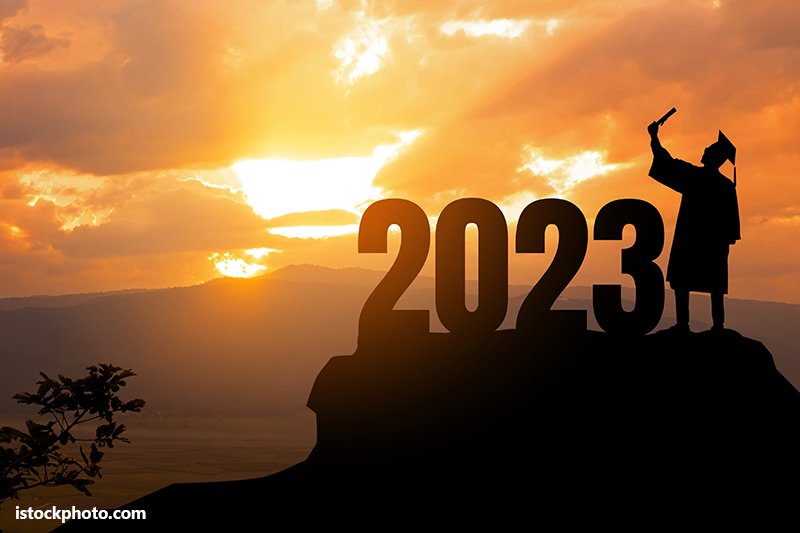 Colleges and universities will face many challenges in 2023. Some are the same-old–same-old. Others are brand-new based on changing aspirations and perceptions of students, families, elected and appointed leaders and the world of employers.
Colleges and universities will face many challenges in 2023. Some are the same-old–same-old. Others are brand-new based on changing aspirations and perceptions of students, families, elected and appointed leaders and the world of employers.
Institutions should increase niche market offerings. Degree-seeking students increasingly want assurance of employability, and diverse study opportunities are appropriate for different students. The 18 to 22-year-olds seeking a college education are vastly different from 34 to 36-year-olds. Aspirations and availability change with context and life circumstances. And to further complicate matters, university leaders and faculty tend to direct educational opportunities to their own experience. And, often and reasonably, are prisoners of personal experiences. Regional responsiveness—geographic guidance—demands individual sovereignty for every student.
Indebtedness for college graduates has flattened in the past few years, according to the Education Data Initiative. The battle is being fought. Some systems, such as The Texas A&M University System leadership, and its universities, have held tuition increases to zero for next year. Such action requires institutional belt-tightening, innovation, creativity, efficiencies, and student-focused concern for costs and indebtedness. The face of higher education will change. More institutions must positively respond to the multifaceted burdens of committed citizenship and cost. The elite private and public flagship institutions will experience the less direct impact of enrollment pressures as these institutions continue to grow. The answer to every resource question at the vast majority of institutions is “increased enrollment.” This is the fiscal calculus for universities, public or private. It is unchangeable, chiseled in stone like the law of gravity.
A challenge facing institutions is that the vast majority of faculty and university leaders come from elite and flagship universities. Many seek to replicate experiences that are now a century old. Michelle Taylor explains, “…UC Berkeley, Harvard, University of Michigan, University of Wisconsin-Madison and Stanford—account for just over one in eight domestically trained faculty.” Okay for some campuses, but untenable for the workhorses of higher education—the regional and comprehensive institutions—where 50% of the students enroll, and local economic benefit is realized. The expectations and aspirations of students have changed. Universities must change to serve the changing groups of students. Some experts believe that as many as 25% of our nation’s colleges will shut down in the next two decades.
Colleges and universities that are still thriving in 10 years will increasingly focus on career readiness, employability, and measurable impacts of educational experiences. According to Forbes, such practices benefit students. Additionally, some estimate 70% of students in public four-year institutions attend regional universities, and we must respond not with “elite envy” but with distinctive programs. Local impacts will be measured by jobs and critical thinking, a knowledge of history, and the ability to write and reason. Working and thinking are not mutually exclusive but mutually supportive.
Another element of this brave new world of higher education will be an ever-increasing hybridization of teaching and learning strategies between traditionally delivered experiences and digitally delivered experiences. Increasingly students will spend less time on campus, and many may stay less than a year in a residential setting if any time at all. Many will study while raising a family and earning a paycheck. International students with challenging visa and immigration requirements may spend a few weeks on a college campus in the United States on short-term visas, not four years in residence.
Powerful new partnerships between postsecondary institutions and various seats of commerce and industry will grow. Directions for curriculum and major focus will evolve from these partnerships. This does not mean that universities will sell their soul to the devil. Instead, it means that universities will respond to the marketplace so that graduates are educated human beings, capable employees, and professionals with something of strong value to contribute to the workplace. The “womb of safety” afforded many traditional students in four “monastic years” in a residential study setting will still have value but does not denigrate a non-traditional educational experience for others.
Added to the ever-growing importance of workplace utility will be a movement to create lifelong learning opportunities for alumni at no cost to the graduate. The days of alumni associations’ primary role as friendship-building institutional support will transform itself into a lifelong relationship with alumni through ever-present, asynchronous, digitally delivered, brushed-up, refreshed, polished insight that leads to increased value and understanding for alumni. The idea that the learning partnership between student and institution stops on graduation day will succumb to the legitimate exigencies of intellectual veracity, vocation and value. Alumni magazines that describe, with pride, the happenings on the campus will have increased visibility on the horizon—a renewed purpose. Insights and ideas produced and shared digitally by capable faculty for alumni, at no cost, will ensure enduring institutional value for graduates over their professional lifetimes.
Effective universities, where respect has turned to ridicule, according to a new publication from John Hopkins Press, will set a new course from the one established 150 years ago. The enterprise is turning. Hidebound sailors are looking hopefully to the horizon or abandoning ships. A new day awaits.
I say, “Beam me up, Scotty.”
Walter V. Wendler is President of West Texas A&M University. His weekly columns, with hyperlinks, are available at https://walterwendler.com/.







